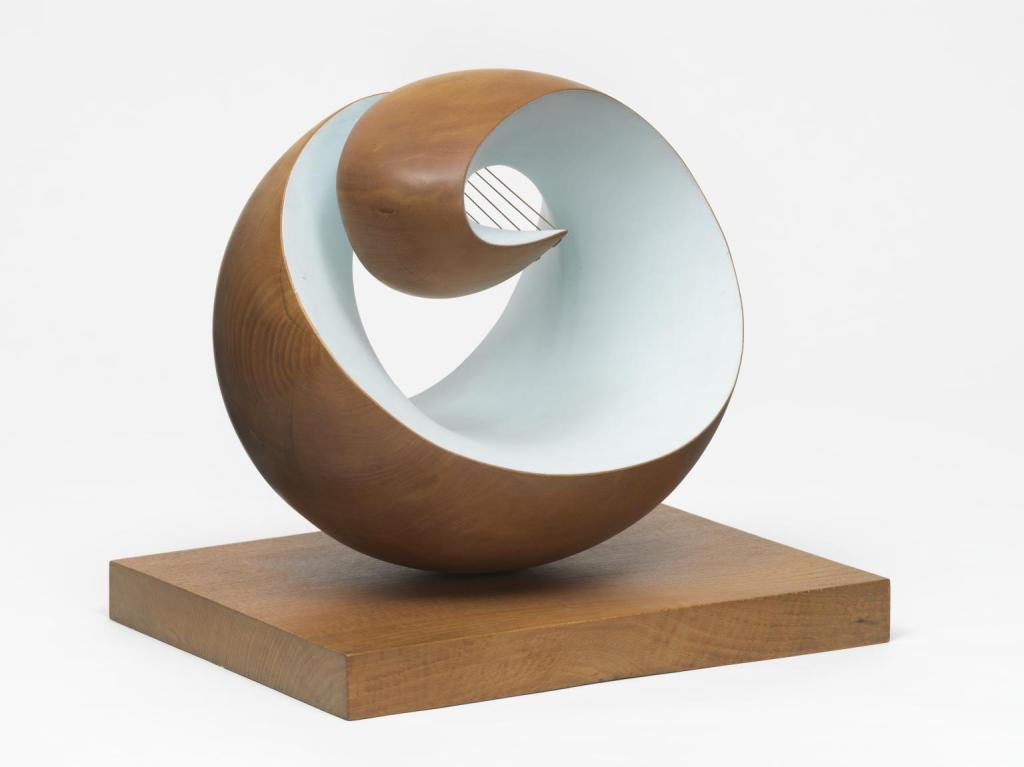February Art: the sea, the sea
A very different representation – rather evocation –of the sea today. I knew about the cries of joy and relief from Greek soldiers ‘Thalatta! Thalatta!’ when as Xenophon describes it they crested a mountain and glimpsed the sea and safety, but ‘Pelagos’ (1946) is also Greek for sea, uttered here much more quietly.

In an early BBC film Barbara Hepworth talks of her attachment to closed forms, returning circularly around themselves, as suggesting some kind of bond, maybe between mother and child, or between man and nature. Unlike Brancusi’s polished ovoids, the hollowness, openness, and variability of the form as we move around it does hint at some kind of access. So, made of elm wood by the sea at St Ives this seaside shape suggests to some a shell, to others maybe some kind of ancient lyre. Hepworth speaks eloquently of her difficulty of putting sculpture into words, partly because it appeals to some of our earliest apprehended senses like touch and even hearing, both available in the womb long before sight; probably the tension and release of sea-rhythms or wider music is played with as these strings are held taut by a curved painted spiral. Normally I would hesitate to suggest a political register for such a piece, but this is environmental art avant la lettre – and because of its post-war date, maybe the rhythms and balance of Pelagos, like the soldiers’ relieved cries, hint at peace’s prospect and some return to harmony.
~ by thebicyclops on February 16, 2024.
Posted in art
Tags: art, Barbara Hepworth, Culture, sculpture, sea, St Ives, Tate, Thalatta thalatta, the sea, Xenophon

